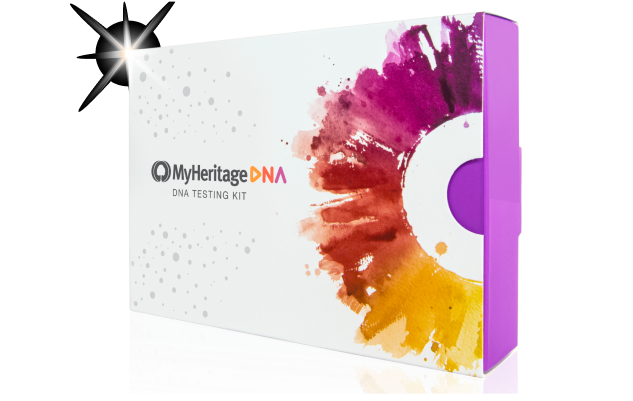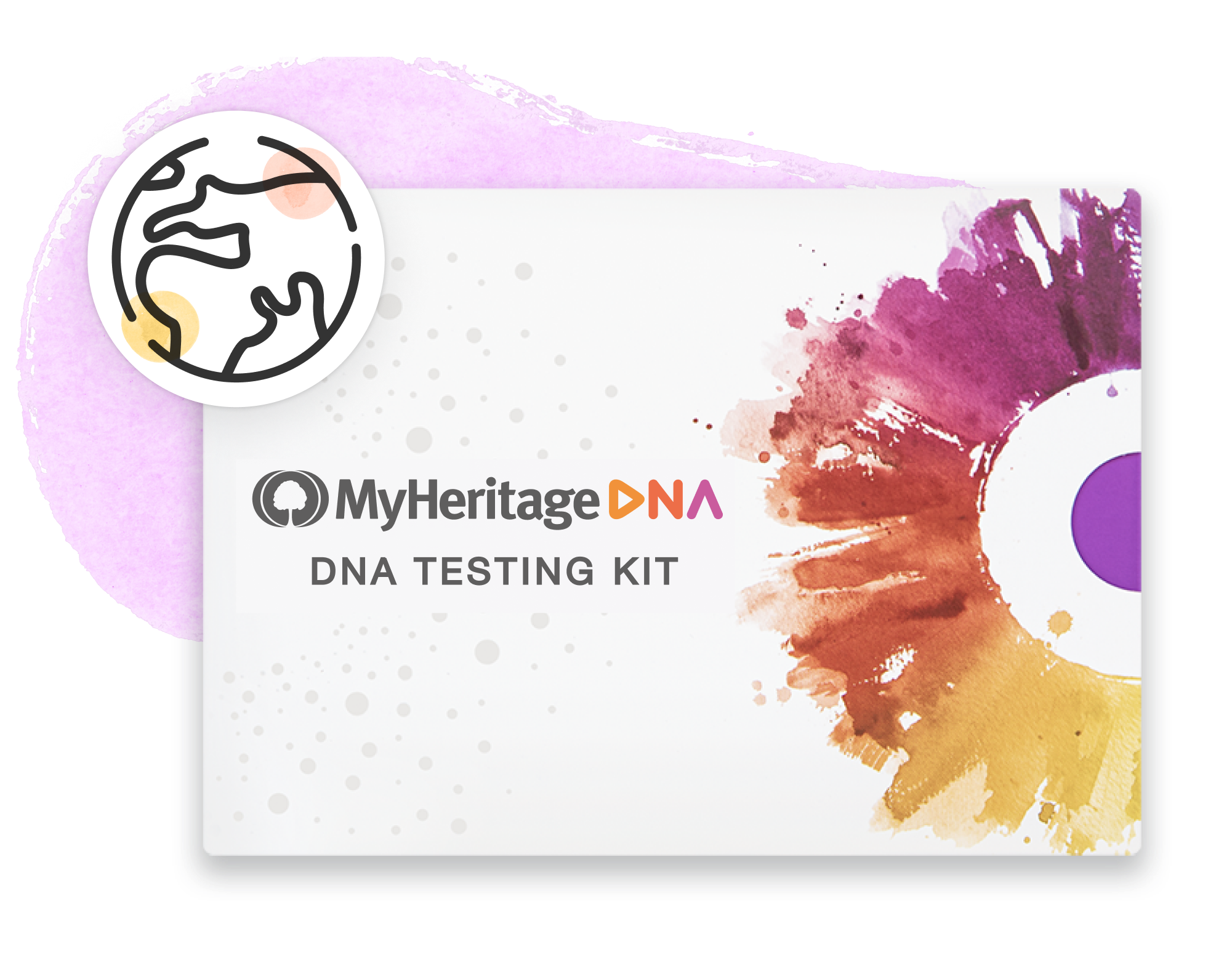Ireland is an island nation in the northeast Atlantic Ocean and home to more than 5 million people.[1] Irish ethnicity developed from multiple groups such as the Gaelic Celts and the Anglo-Normans, which included the English, the Vikings, and the French. Today the Republic of Ireland consists of about five million people. In terms of Ireland’s racial demographics, 82% are Irish, and 9% are other white. The remaining 9% include people of Asian and African backgrounds.
Research your ancestors on MyHeritage
Irish history

The earliest inhabitants of Ireland were Celtic tribes who settled on the island around 500 BC. These tribes, known as the Gaels, established a rich and vibrant culture, with a strong emphasis on oral tradition, art, and spirituality. They practiced a form of polytheistic religion and developed a unique social structure based on clans and kingship.
During the 5th century, Ireland embraced Christianity. This process unfolded relatively peacefully, likely due to the diminished authority of the druid priestly class following the numerous defeats of the Celts by the Romans on the continent and in Britain. As a result of this nonviolent process of adopting Christianity, Ireland became one of the few cultures where pagan heritage was not rejected but carefully preserved within Christian monasteries. It is thanks to this preservation that ancient Celtic myths and sagas have reached us. Ireland itself became a center of learning for several centuries.
In the 9th and 10th centuries, Ireland faced invasions by Viking raiders from Scandinavia. The Vikings established trading settlements and exerted political control over certain areas, most notably Dublin. Over time, the Vikings assimilated into Irish society, adopting Gaelic language and customs.[2]
In the 12th century, the Normans, led by lord Richard de Clare, nicknamed Strongbow, invaded Ireland at the invitation of an Irish king. They quickly established their dominance and introduced feudalism, constructing castles and imposing their own legal and administrative systems. The Normans' presence laid the foundation for centuries of English influence in Ireland.
The English gradually expanded their control over Ireland, particularly during the 16th century. The period of English colonization, known as the Plantations, saw the confiscation of land from Irish Catholics and its redistribution to English and Scottish settlers. This led to a long history of land disputes, social unrest, and resistance against English rule.

In the 17th century, religious tensions between Catholics and Protestants further exacerbated the divisions in Ireland. The 1641 Rebellion and the subsequent Cromwellian conquest resulted in widespread violence and displacement. The Penal Laws imposed severe restrictions on Irish Catholics, further marginalizing them within their own land.
In the late 18th century, Irish nationalism began to emerge as a response to oppressive English rule. The United Irishmen, led by figures like Wolfe Tone, called for an independent and united Ireland, free from British control. However, their rebellion in 1798 was crushed, and Ireland remained under British domination.
The 19th century witnessed a resurgence of Irish cultural and political identity. The Gaelic Revival sought to revive Irish language, literature, and traditions, while the political movement for Home Rule gained momentum. The struggle for Irish independence culminated in the Easter Rising of 1916 and the subsequent War of Independence. In 1922, the majority of Ireland gained independence as the Irish Free State, while Northern Ireland opted to remain part of the United Kingdom.

The partition of Ireland resulted in decades of political and sectarian conflict in Northern Ireland, known as "The Troubles," which lasted from the late 1960s to the Good Friday Agreement in 1998. The agreement brought relative peace and established a power-sharing government between nationalists and unionists.
Today, Ireland is a sovereign nation, divided into the Republic of Ireland, which encompasses most of the island, and Northern Ireland, which remains part of the United Kingdom. Ireland has undergone significant social, economic, and cultural transformations, embracing its heritage while also looking towards the future as a member of the European Union.
Irish language

As for the Irish language, only about 20% of the population of Ireland fluently speaks it. English dominates as the primary language. Irish is only the native language for a small number of Gaeltacht natives (Irish-speaking regions on the western outskirts of the country). The majority of Irish language speakers are urban dwellers who consciously learned it in adulthood. Gaeltacht areas are not a homogeneous entity, and each of them has distinct dialects. Approximately 40% of Irish speakers with Irish as their mother tongue resides in County Galway, 25% in County Donegal, 15% in County Mayo, and 10% in County Kerry.
There is a standardized literary language called "Caighdeán." Its vocabulary is primarily based on Connacht dialects. However, Caighdeán has an interesting characteristic: the language does not have a standard pronunciation. Therefore, speakers of the literary language may have Munster, Connacht, or Ulster pronunciation, depending on the basis of pronunciation used by the specific language speaker. The same written text can be pronounced differently.[3]
Irish religion
Most of the Irish people are Catholics. For a long time, belonging to the Catholic Church was a form of passive resistance against English invaders. Therefore, even today, an Irish person professing a different faith may seem exotic.
Irish costume

The medieval Irish costume was formed from the costume of the ancient Celts under the influence of the pre-Celtic population of the island - the Picts. The main component was a knee-length linen shirt called "leine" (English: leine, Irish: léine), which was worn directly on the body and put on over the head. Typically, the leine was a light yellow color (in general, saffron yellow was an important characteristic of the medieval Irish costume). The leine was belted with leather belts with metal buckles or woolen belts. Early medieval leine had narrow sleeves, but by the late Middle Ages and the Renaissance period, the sleeves became wide, possibly influenced by the European fashion of the 15th century, particularly English fashion. The nobility would wear several layers of shirts (leines) with the outer shirt often left undyed, while a woolen cloak called a "brat" and short jackets known as "killkomon" and "ionar" were also worn.[4]
Like in many other cultures, in Ireland, colors of clothing and their quantity reflected a person's status. These were documented in the Brehon Laws. Servants and peasants could only wear clothing of one color, a landowner could wear two colors, an official could wear three colors, and a free person could wear four colors. Only a leader could afford to wear five colors, while a judge, poet, or druid could wear six colors. The highest nobility was allowed to wear seven colors. This rule also applied to their children, where different colors were assigned based on their rank. Gray, yellow, and black were for children of the lower class, red, green, and brown were for the children of leaders, and blue and purple were reserved for the children of kings.[4]
Irish culture
Folk music and dances are the true highlights of Irish culture. The Irish people have a great love for celebrations and festivities, and for several centuries, lively fairs have remained their favorite pastime. Ireland's contemporary music scene is also diverse, with notable acts such as U2, The Dubliners, The Pogues, The Chieftains, Van Morrison, and Damien Rice. Ireland, whose literature has been shaped by Celtic mythology and a rich oral and poetic tradition, has produced great authors like Samuel Beckett, James Joyce, and Seamus Heaney. Moreover, three Irish authors have been honored with the Nobel Prize in Literature.
When it comes to Irish cinema, in most cases, the name that comes up is Martin McDonagh, the famous Irish director ( In Bruges (2008), Seven Psychopaths (2012), Three Billboards Outside Ebbing, Missouri (2017), and The Banshees of Inisherin (2022) and the writer Sally Rooney, whose novel "Normal People" served as the basis for the popular TV series.
Irish cuisine
At the core of Irish cuisine is the potato in all its forms. The potato is the main ingredient in traditional Irish stew. Additionally, the Irish have a great love for beer. The Irish beer brand Guinness is popular worldwide. The Irish prefer to spend their leisure time in pubs, of which there are a vast number in the country. For instance, in Dublin, there is one pub for every 100 people. By the way, the world's oldest pub, Sean's Bar, is located here and has been in operation since 900 AD.
Explore more on Irish ethnicity
- Irish, Scottish, and Welsh ethnicity on MyHeritage
- Ethnicity map of Ireland on MyHeritage
See also
References
- ↑ https://www.cso.ie/en/releasesandpublications/ep/p-cpsr/censusofpopulation2022-summaryresults/
- ↑ https://thestrip.ru/permanent/etnicheskoe-proishozhdenie-irlandcev-osobennosti-amerikanskoi-zhizni/
- ↑ https://e-trans.ru/languages/about.php?n=146
- ↑ 4.0 4.1 https://druidism.ru/history/irish-golden-age-costume/


